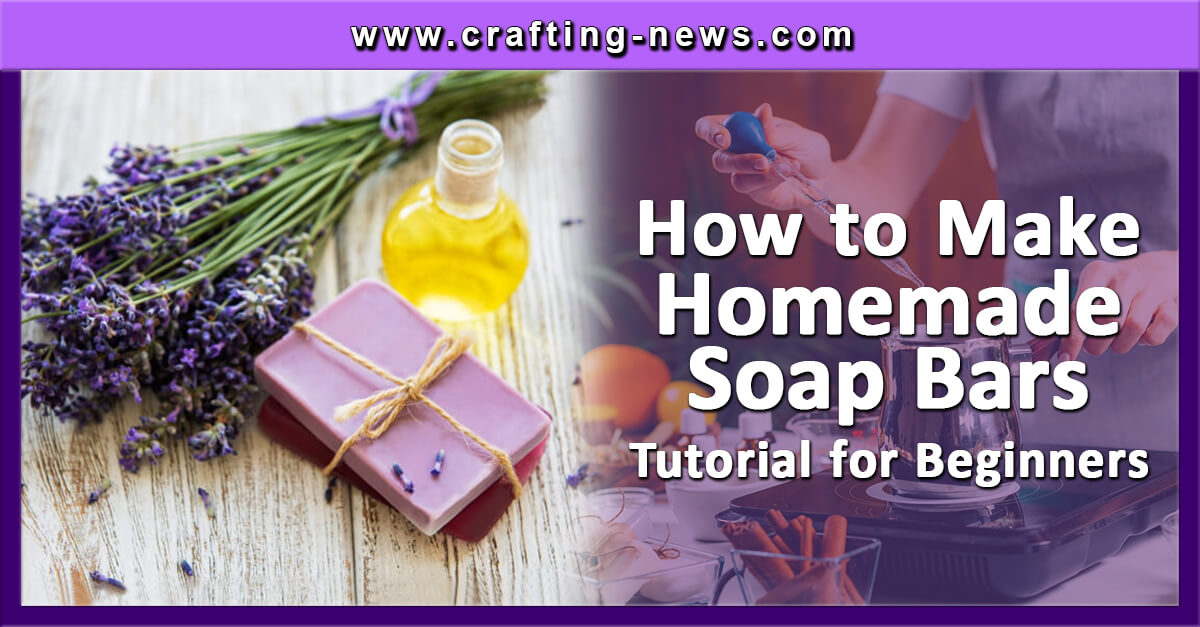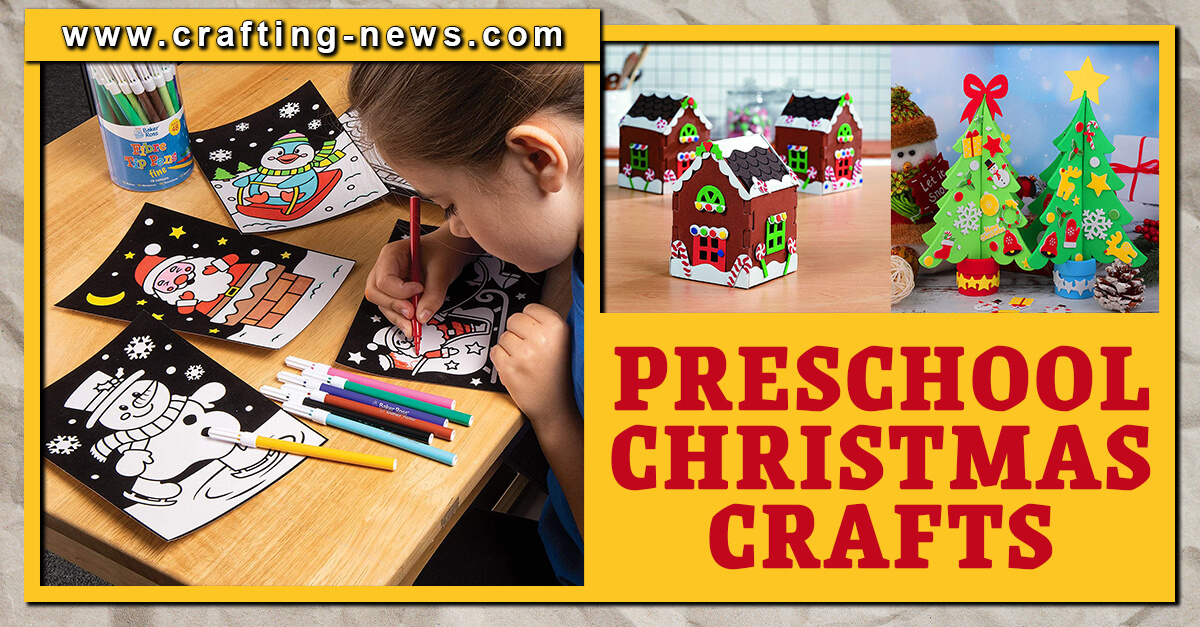Making soap is a fun hobby. But if you are a beginner, the process may be intimidating. We want you to know that soap making is not difficult. And once you know how to make homemade soap bars for beginners, you can easily customize the recipe. You can add essential oils, exfoliants, and other additives.

When you make your own handmade soap, you will know exactly what ingredients you are using to wash your body. There will be no second-guessing if the soap you are using is safe for you or your family.
Why You Should Make Handmade Soap
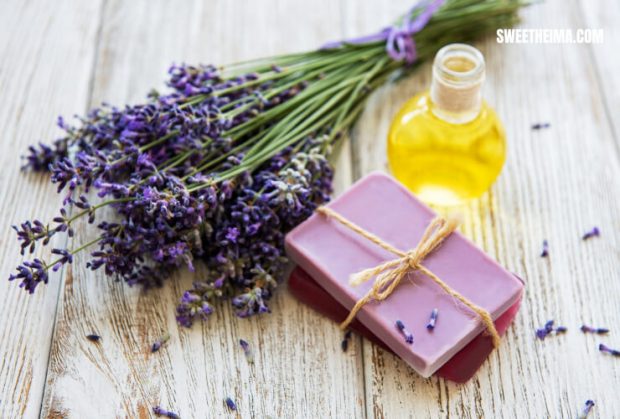
There are many reasons you should make handmade soap. It is not just a fun hobby; it is a skill that can make you money and improve the health of your skin.
- Many store-bought soaps contain harmful chemicals and toxins.
- It is better for people that have allergies.
- You can save money.
- You can give homemade soap as a gift.
- They are terrific items to sell at craft fairs.
- It is a good skill to know in case of an emergency.
- When you make handmade soap, your home will smell amazing.
- It is fun!
Processes for Making Handmade Soap
There are two main processes for making handmade soap: cold process and hot process. The easiest method is the cold process. This is the process we will be using today for our how to make homemade soap bars for beginners tutorial.
- Cold Process
The cold process does not require any heat other than what is needed to melt any solid oils. When the ingredients are mixed, is creates its own heat reaction. The soap will set up naturally within 18 to 24 hours. The finish will be smooth.
- Hot Process
The hot process uses an external heat source to speed up the process. With the hot process, the soap will set up in about 2 hours. Hot process soap will have a rough finish.
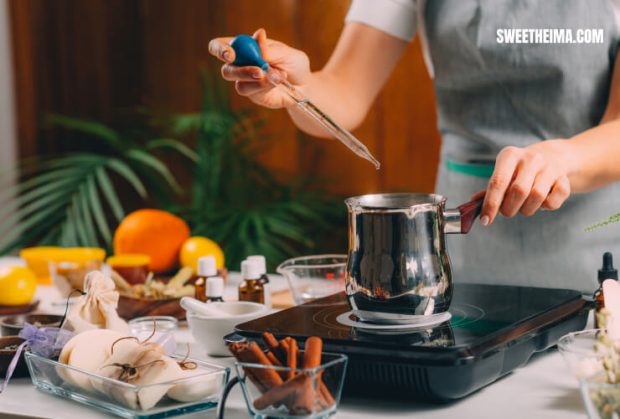
Do You Have to Use Lye in Handmade Soap?
Yes, you must use lye in homemade soap. There is no substitution. Lye is corrosive and can cause serious burns and damage fabric. When working with lye, it is important that you always take all necessary safety precautions.
When mixing water and lye, the temperature will rise and there will be fumes. You do not want to breathe in the fumes. This is why it is important that you work in a well-ventilated area.
When mixing the two ingredients, add the lye to the water, not the other way around. And start stirring immediately. If the lye clumps up, it can explode.
Once the soap is mixed and the whole process is completed, there is no lye left in the final bar. The soap is safe to use on your skin.
What you will Need to Make Handmade Soap

Before you begin making handmade soap, get everything together. You do not want to get started and then realize you are missing something. All the supplies you use for soap making should be dedicated to the craft. Do not use them for food.
Everything you need on how to make soap bars:
Equipment and Tools
- Silicone mold
- Scale
- Newspapers to cover your work area
- Goggles
- Gloves
- Long sleeved Shirt
- A mask
- Stick blender
- Thermometer
- Pint glass jar
- Large glass measuring cup or large glass bowl
- Silicone spatula
- Soap cutter
- Pot
- Spary bottle
Basic Handmade Soap Ingredients
- 11.2 oz Water
- 4.8 oz Lye
- 15 oz Olive Oil
- 11 oz Palm Oil
- 8 oz Coconut Oil
- 99% isopropyl alcohol
Steps on How to Make Homemade Soap Bars for Beginners
- Find a well-ventilated area to work.
- Cover your work area with the newspapers or other protective covering.
- Gather all your equipment, tool and ingredients.
- The lye used in soap is dangerous. Prepare yourself by putting on all your protective gear. Do not take it off until you are done.
- In the glass jar, carefully combine the water and lye. When you add lye to water, the temperature will increase dramatically. Stir it until the lye is completely dissolved and the mixture is clear. Set it aside.
- Combine and thoroughly melt the solid oils in the pot. Pour the mixture into the glass measuring cup.
- Let the two mixtures cool to anywhere between 100-130 degrees. The two mixtures should be close to the same temperature when they are mixed.
- Blend your oil mixture with the stick blender. Bubbles will form. You want to get rid of the bubbles by gently tapping the blender on the bottom of the measuring cup.

- After you have removed all the bubbles you can, add the water and lye mixture.
- Use the stick blender to combine the 2 mixtures. Switch between the pulse setting and the mixing feature. Do this for about 30 seconds.
- Check the thickness of the mixture by pulling out the blender. The soap mixture should be thick enough that it does not run off the mixture like oil. It should coat the end instead. If you are planning on adding a fragrance or colour, you will want the mixture to be runny when you do so.
- If the mixture is not thick enough, repeat steps 10 and 11 until it reaches the proper consistency. It should be almost as thick as pudding. You will notice the mixture has also lightened in colour.
- Pour the mixture into your silicone mold. If you are using a different type of mold, you will need to prepare it first.
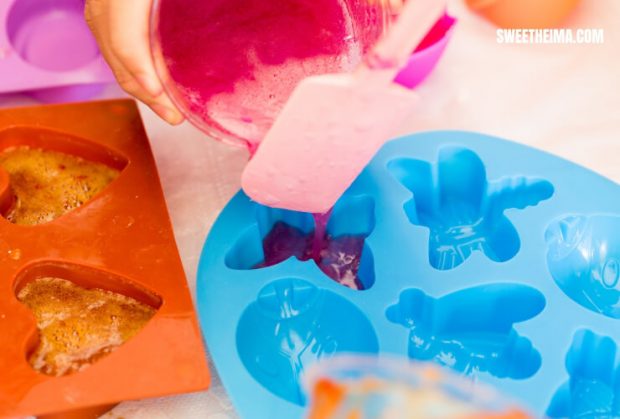
- After you have filled the mold, tap it firmly onto your countertop. This will help to remove the bubbles. If you make cakes, it is the same process.
- Spray the top of the soap with 99% isopropyl alcohol.
- Set the molded soap aside someplace safe.
- In about 3-4 days you can cut the soap. First, unmold the soap and cut it will your soap cutter.
- Set the bars of soap aside and let them cure for 4-6 weeks.
- You can now use your soap or package if for gifts and resale.
ONCE YOU HAVE LEARNED THE BASICS OF HOW TO MAKE HOMEMADE SOAP BARS FOR BEGINNERS YOU CAN BEGIN TO CUSTOMISE YOUR RECIPE.
Making handmade soap is a fantastic way to improve your skin and make your house smell good. Soap making will take a little time to master, but it will be well worth your time. The more you practice and change up your recipes the better your finished soaps will become.
Once you get the hang of it, check out this tutorial on How to Make a Bath Bomb for a more relaxing bath.
If you want to find out more about soap making check out the website Soap Making Advice. They have a free soap making course and ebook.
Soap making is not a project that you will want to try with your young children. Lye is dangerous and should be handled with care. When learning how to make homemade soap bars for beginners, always remember to adhere to all safety measures.

